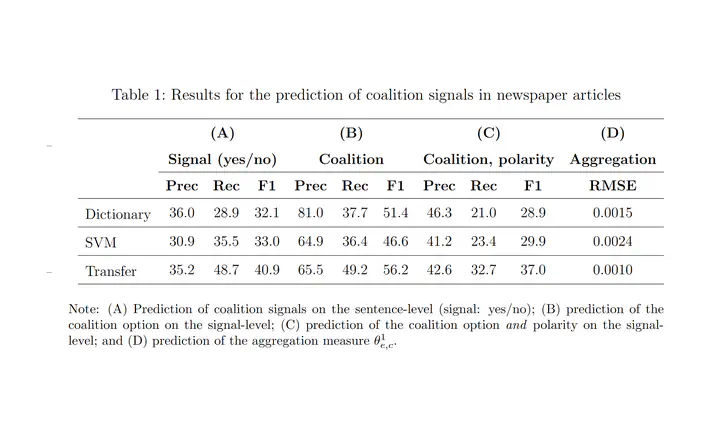Measuring Inter-Party Communication: A Transfer Learning Approach

Abstract
Inter-party communication is crucial in representative democracies, enabling in- formation exchange and dialogue among political parties. Despite its importance, research on this topic remains limited due to a lack of comprehensive conceptualization and challenges in large-scale measurement. This article proposes a holistic definition of inter-party communication as public communication by parties about others with a positive, neutral, or negative stance, focusing on collaboration, policy, or personal issues. To effectively measure inter-party communication, we introduce a novel transfer learning approach capable of automatically classifying large volumes of textual data. Two case studies on coalition signals in Germany and negative campaigning in Austria demonstrate its effectiveness. The study contributes to our understanding of political discourse and the dynamics of party competition. Our approach advances automatic text classification methodologies and opens new avenues for studying political communication.